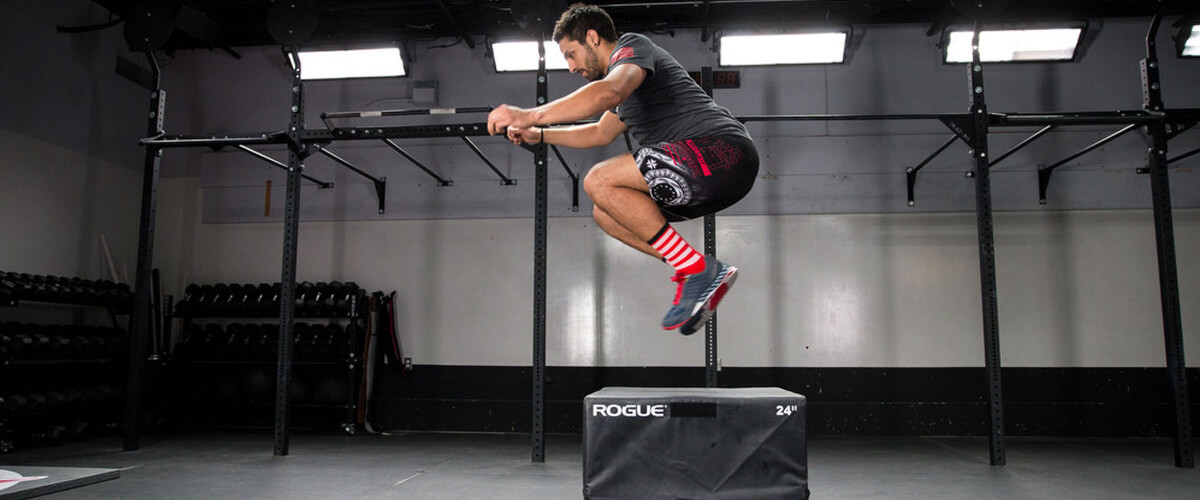
Box Workout
To perform box jumps, you will need a stable surface—preferably a plyometric box between 12-36 inches, depending on your abilities. Assume an athletic position, with your feet about shoulder-width apart, at a comfortable distance form the box. Start the box jump by quickly getting into a quarter squat while hinging at the hips to engage the hamstrings and glutes. Then, forcefully extend your hips, swing your arms, and push your feet though the floor to propel yourself onto the box.
When landing, think of absorbing the force instead of “sticking” the landing. Mimic your landing on a cat’s example: gracefully and quietly. This will not only help you improve the deceleration phase of the exercise but also reduce the risk of injury. You should land in a squat position with your knees slightly above 90° with your chest up. Hold for 2-3 seconds, stand tall, and then step back down.
BENEFITS FOR SIZE AND CONDITIONING
The biggest benefit of the box jump is that it improves the reaction of fast-twitch muscle fibers throughout the body. This exercise requires your leg and core muscles to contract very quickly so you can generate maximum force with each leap. Secondly, the landing phase (deceleration phase) is the most important part of a plyometric activity—it helps decrease the risk of injury and increase your ability to make sudden stops.
So how can this help you build size and conditioning? The higher and more explosive you jump, the more muscle tissue that is activated. Box jumps are great to round out your quadriceps training by tapping into some fast-twitch muscle fibers that are not usually hit during leg presses and leg extensions. The deceleration phase also requires a tremendous amount of quadriceps strength in order to land properly. Box jumps are also very demanding on the metabolic system making them a great exercise to incorporate in your fat loss training.
